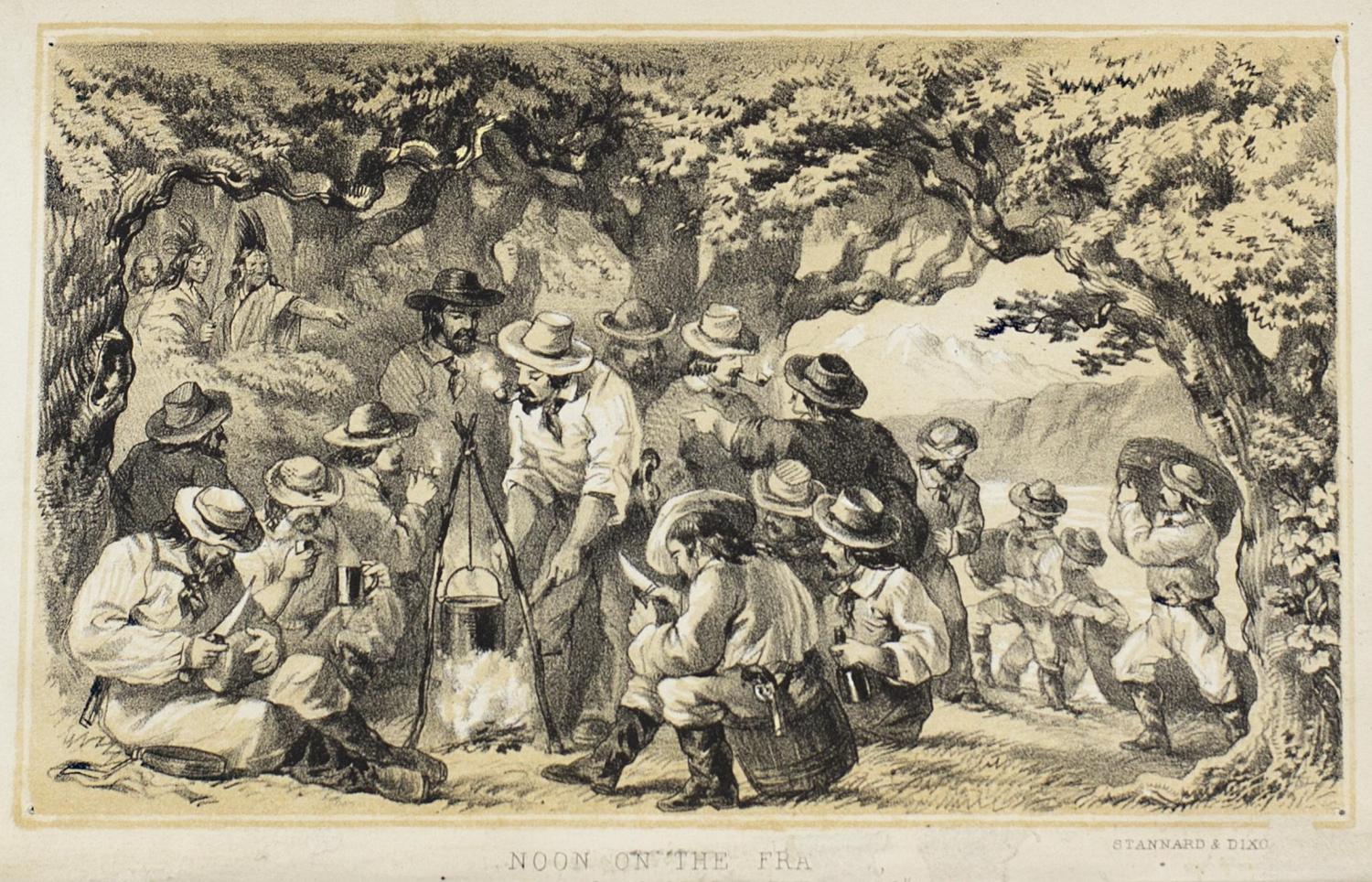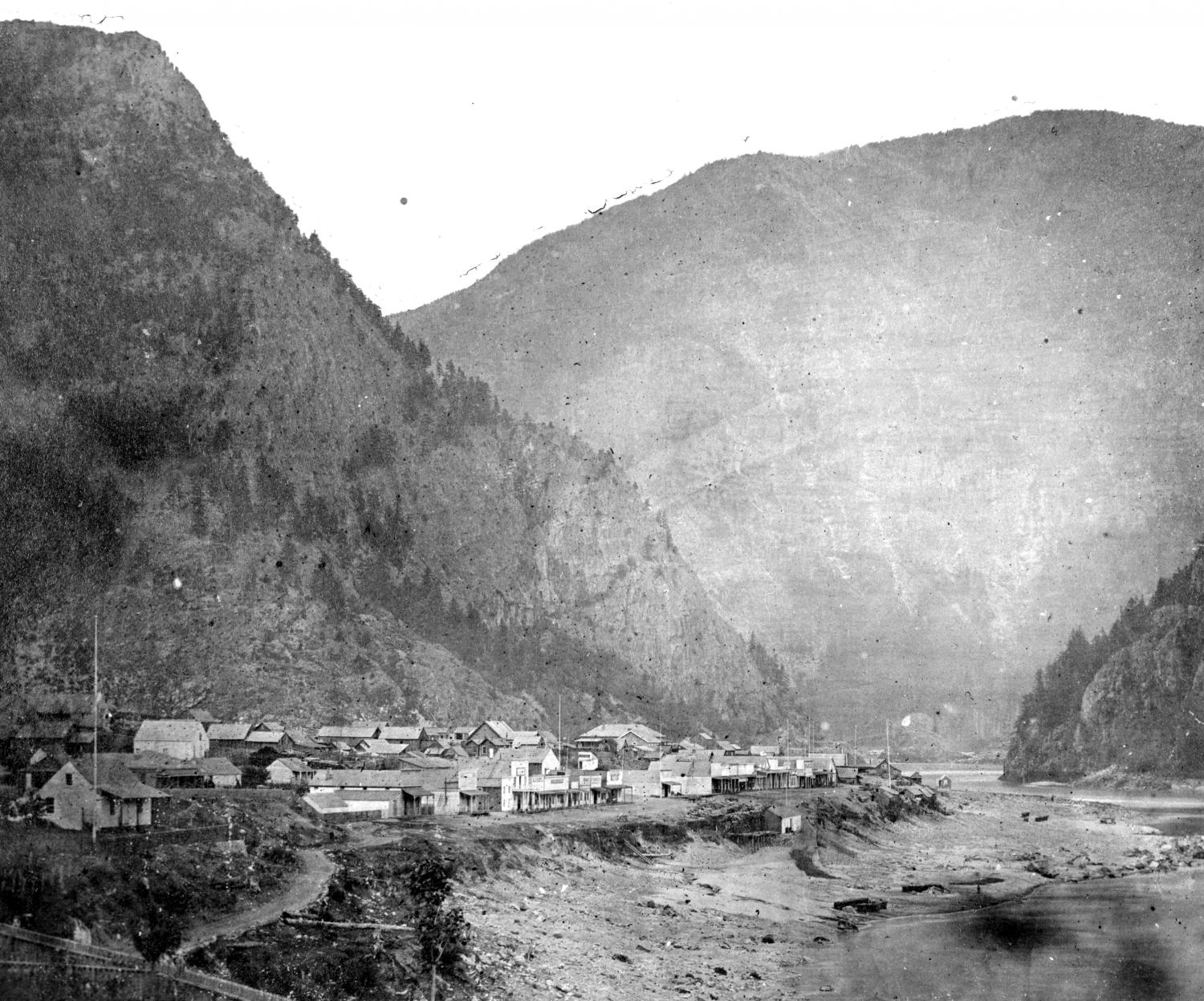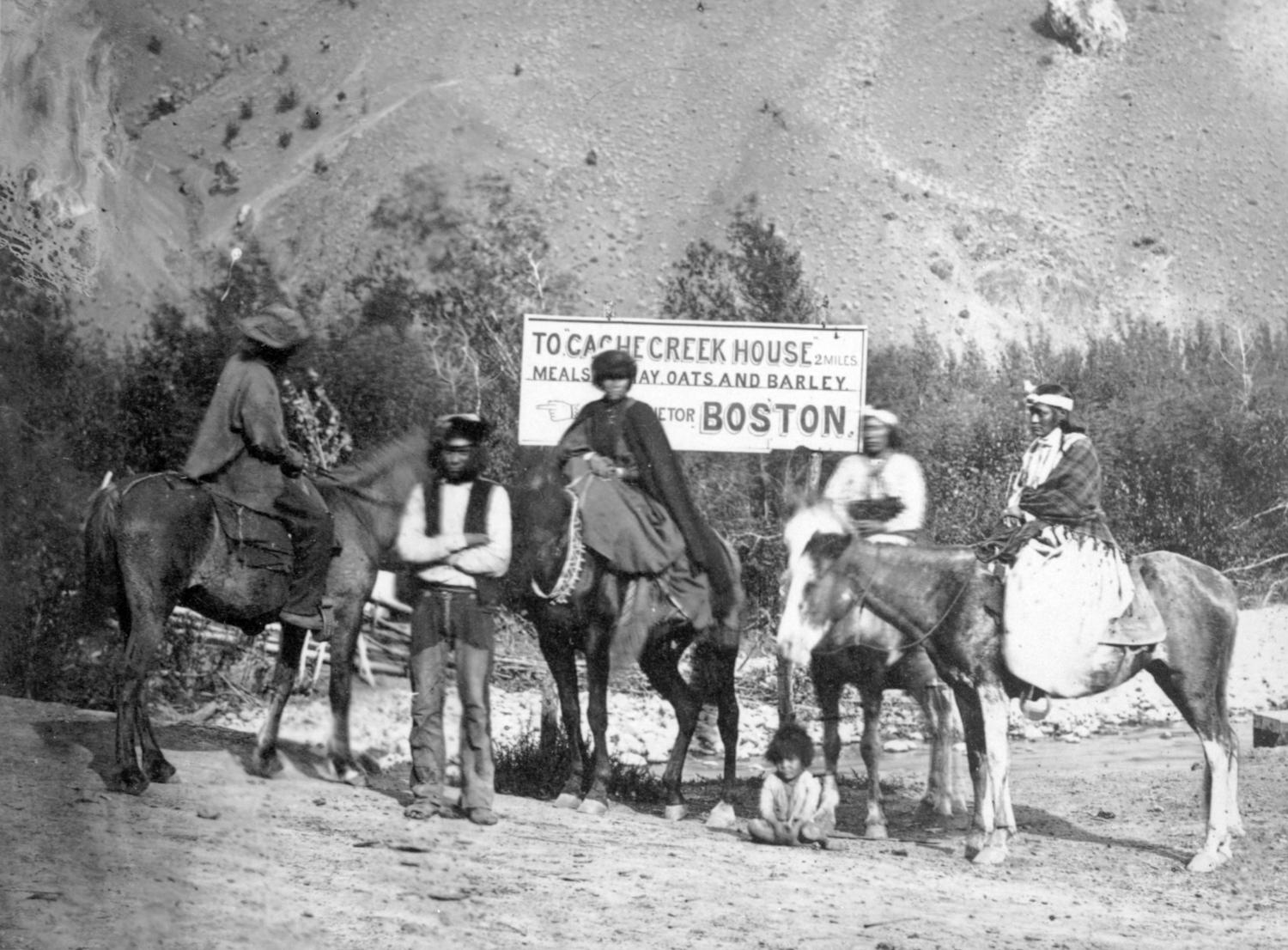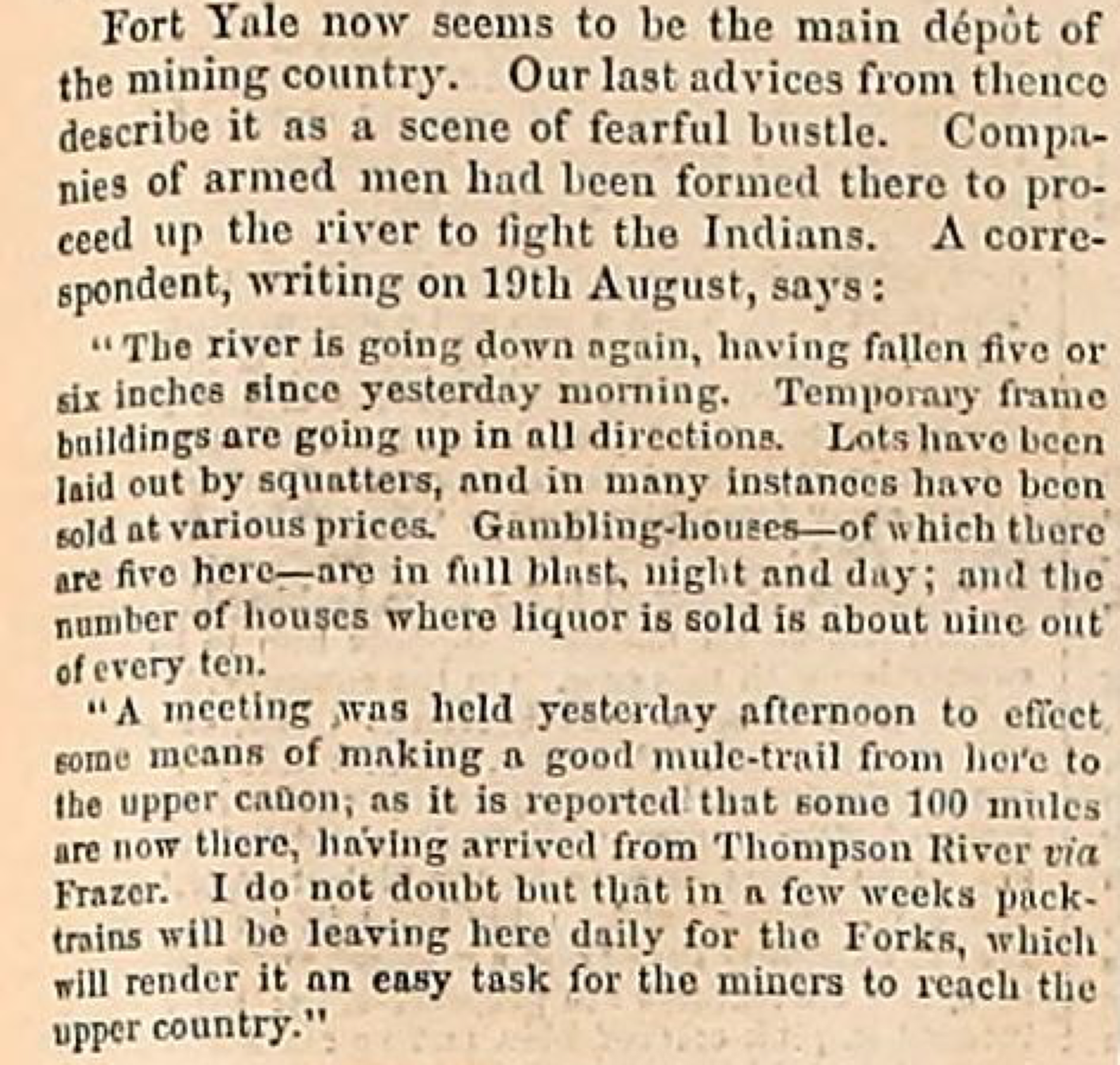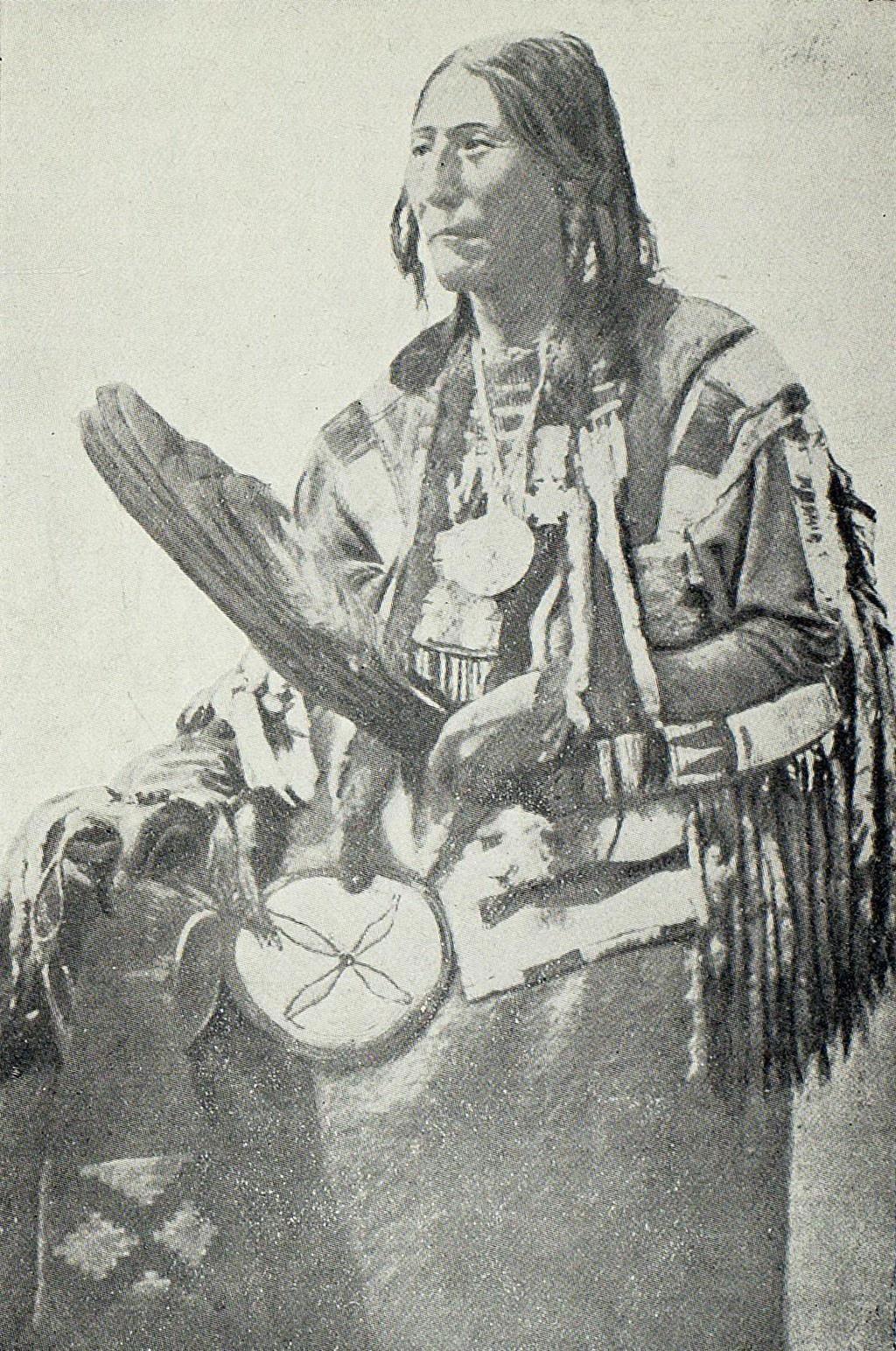The Fraser Canyon War
A Nlaka’pamux chief arranges a peace with an American military commander, avoiding major bloodshed
Date: 1858
The discovery of gold in the Fraser Canyon in 1858 didn’t just spark American interest in British Columbia. It unleashed a flood. Thanks to press coverage starting in March, thousands of Americans made the trek north. They landed in Victoria then snaked their way up the Fraser River, from Fort Yale to the Cariboo.
Local First Nations watched mining boomtowns rise overnight. They saw increased pollution due to the spike in population and dwindling salmon numbers from mining construction in important spawning grounds. They also found their winter provisions diminish, looted by well-armed gold seekers.
Then representatives from the Yakima Nation, based in present-day Washington state, came with news from the United States. There, miners had organized themselves into militias, waging genocide on the Indigenous population in Oregon and Washington. Unite, the Yakima said, and drive the whites out together.
Nlaka’pamux Chief David Spintlum, or Sexpínlhemx, heeded their advice. Two thousand warriors from the Nlaka’pamux, Okanagan and Secwepemc — or Shuswap — Nations began training for battle in the Nlaka’pamux capital of Kumsheen, located at the confluence of the Fraser and Thompson Rivers, where modern-day Lytton sits.
By June, battle seemed imminent. French miners had raped a Nlaka’pamux woman. Indigenous warriors retaliated by decapitating the miners and floating their heads downriver. In retaliation, the Americans slaughtered Indigenous women and children and then burned Indigenous land and resources.
By early August, provocation turned to outright war as American troops began moving en masse north towards the Fraser River. Nlaka’pamux women counselled Chief Spintlum to try for peace. This wasn’t a popular stance among the nations. He had to convince his allies, many of whom were wanting to fight, to join him in calling for a truce.
Alongside Chief Spintlum, 11 Indigenous chiefs negotiated a peace treaty with American Captain Henry Snyder in late August. Chief Spintlum’s decision to push for peace over war not only saved countless lives but is now credited with helping prevent American expansion into what we now call British Columbia.
Sources:
1. Ficken, Robert E. Unsettled Boundaries: Fraser Gold and the British-American Northwest. Washington State Univ. Press, 2003.
2. Loring, Kevin. “Interview for British Columbia: A History (Knowledge Network and Screen Siren Pictures).”
3. Marshall, Daniel. Claiming the Land: British Columbia and the Making of a New El Dorado. Ronsdale Press, 2018.
4. Marshall, Daniel. “Mapping the New Eldorado: The Fraser River Gold Rush and the Appropriation of Native Space.” New Histories for Old Changing Perspectives on Canada's Native Pasts, edited by Ted Binemma and Susan Neylan, Univ of British Columbia Press, 2007.
5. Marshall, Daniel. “No Parallel: American Miner-Soldiers at War with the Nlaka’Pamux of the Canadian West.” Parallel Destinies: Canadian-American Relations West of the Rockies, by John M. Findlay and Kenneth Coates, Center for the Study of the Pacific Northwest in Association with University of Washington Press & McGill Queens-University Press, 2015.

